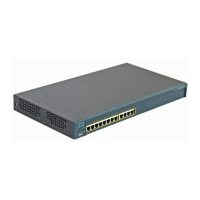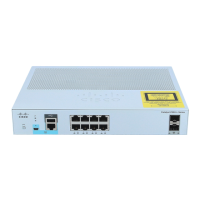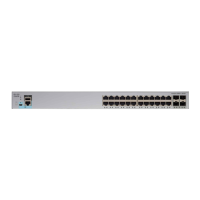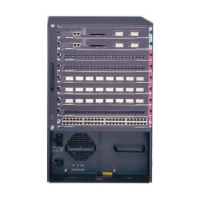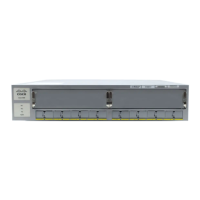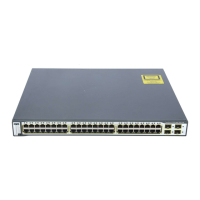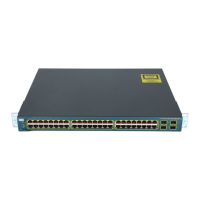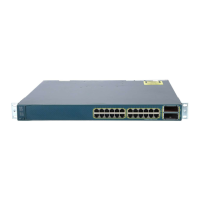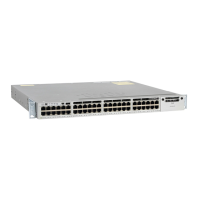Chapter 5 Clustering Switches
Using SNMP to Manage Switch Clusters
5-22
Catalyst 2900 Series XL and Catalyst 3500 Series XL Software Configuration Guide
78-6511-05
Using SNMP to Manage Switch Clusters
You must enable SNMP for the Cluster Management reporting and graphing
features to function properly. When you first power on the switch, SNMP is
enabled if you enter the IP information by using the setup program and accept its
proposed configuration. If you did not use the setup program to enter the IP
information and SNMP was not enabled, you can enable it on the SNMP
Configuration page described in the “Configuring SNMP” section on page 6-18.
On Catalyst 1900 and Catalyst 2820 switches, SNMP is enabled by default.
When you create a cluster, the command switch manages the exchange of
messages between member switches and an SNMP application. The Cluster
Management software appends the member switch number (@esN, where N is the
switch number) to the first configured RW and RO community strings on the
command switch and propagates them to the member switch. The command
switch uses this community string to control the forwarding of gets, sets, and
get-next messages between the SNMP management station and the member
switches.
Note When a standby group is configured, the command switch can change without
your knowledge. Use the first read-write and read-only community strings to
communicate with the command switch if there is a standby group configured
for the cluster.
If the member switch does not have an IP address, the command switch passes
traps from the member switch to the management station, as shown in Figure 5-7.
If a member switch has its own IP address and community strings, they can be
used in addition to the access provided by the command switch. For more
information, see the “SNMP Community Strings” section on page 5-10 and the
“Configuring SNMP” section on page 6-18.
